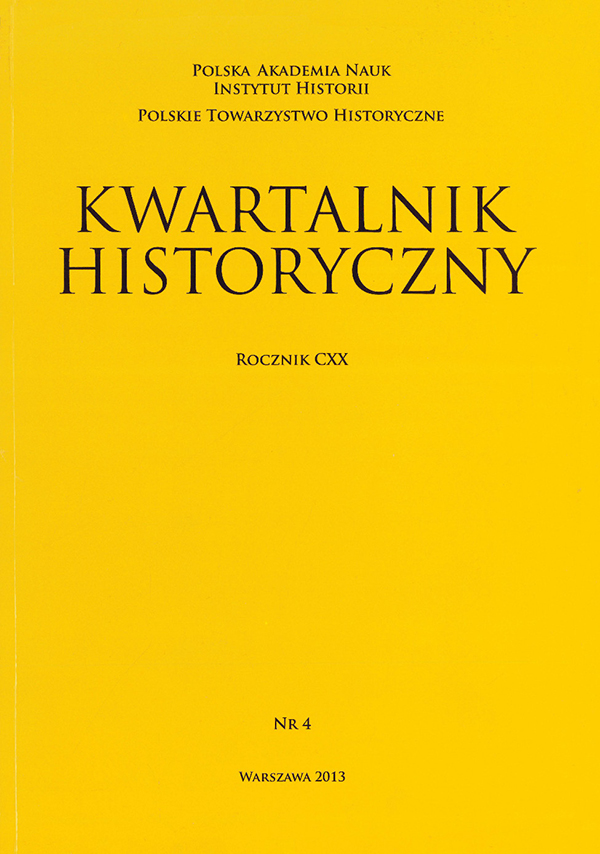Europa Środkowa (Środkowo-Wschodnia), czyli o pochwale różnorodności i komparatystyki
DOI:
https://doi.org/10.12775/KH.2013.120.4.04Sažetak
Central Europe (East-Central Europe) or Extolling Diversity and ComparatisticsThis essay is, on the one hand, historiographic and, on the other hand, politological. In the first part the author analysed ways of using the terms: “Central Europe” and “East-Central Europe” in contemporary multi-volume syntheses of the region’s history, as a rule spanning from the ninth-tenth century to the end the last century. In the second part he shared reflections on the shaping of the common, supra-national identity of Central (East-Central) Europe from the middle of the nineteenth century and the question why at present it is not expressed in the existence of a regional political or economic organisation uniting the interests of itsmembers.
The author expressed the conviction that in reference to the past it is possible to apply the concept: “Central (East-Central) Europe” albeit in each epoch phenomena that granted this region its specificity represented a different intensity and range; hence, the boundaries of the region in question were frequently subjected to changes. The second postulate formulated by the author and addressed to historians is the avoidance of identity narration based on a negative reference to “outer” objects. In syntheses of the region such a point of reference is to this very day Russia, treated, predominantly in Polish historiography, as a “civilisation” that does not meet the standards of theWest.
The author believes that it is possible to speak about a more permanent East-Central Europe only starting from the mid-nineteenth century, when there came being an outline of the idea of solidarity in the struggle conducted by nations against empires. The experiences of the twentieth century – symbolised by the events of 1918, 1945 and 1989 – also granted an increasing number of joint features to the region from Estonia to Albania and contributed to the establishment of regional supra-nationalidentity.
Theendofthe“brieftwentiethcentury”andthepost-1989achievementbythe states of the region of membership in Western structures (NATO, EU) contributed to weakening the feeling of regional bonds. Such contemporary phenomena as: the renationalisation of foreign policies, obsessive memories of events from the 1939–1989 period,growingtensionwithneighbouringcountriesandconcernabouttheidentityofthe“small”nationsinanepochofglobalisationarethereasonwhythepro-communitypotentialofEast-CentralEurope,mouldedintheprevioushalfacentury, iswaning.
Downloads
Objavljeno
How to Cite
Broj časopisa
Rubrika
Stats
Number of views and downloads: 564
Number of citations: 0



